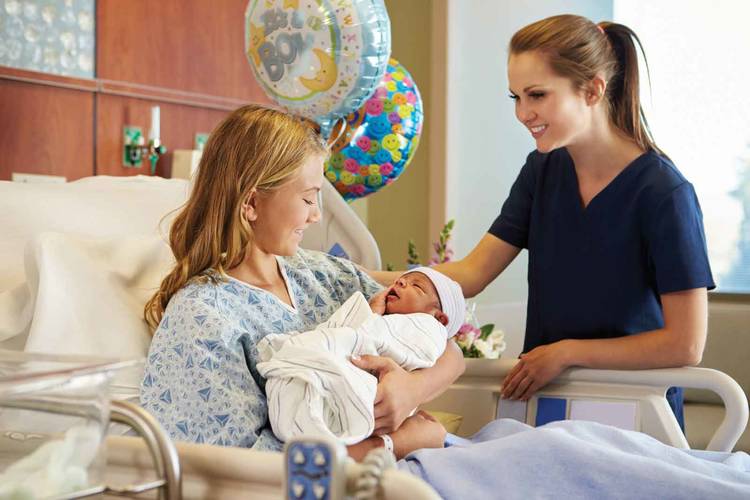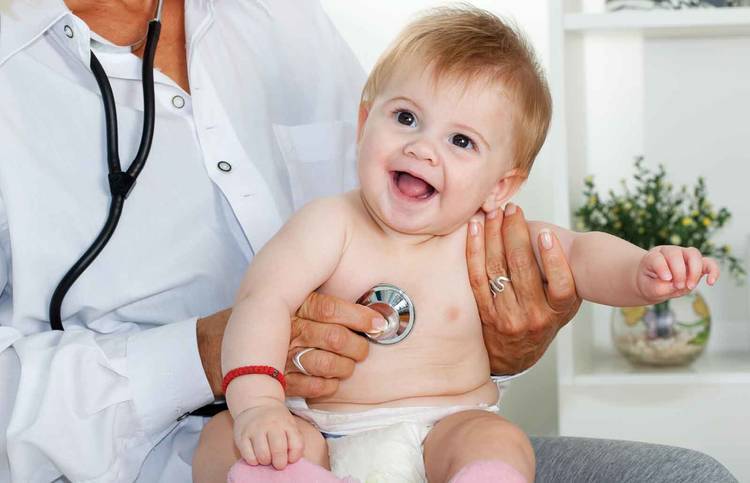Sadie Hasbrouck, Hana Smith, and Bethany Ashby, University of Colorado School of Medicine

Abstract
This article describes one family’s experience in the Young Mother’s Clinic (YMC), a medical clinic providing multidisciplinary care to adolescent mothers and their children. The authors highlight the neurodevelopmental changes that occur in the later adolescent period and explore related clinical implications for professionals working with these young parents and *their children. *
Adolescent parents and their children require specialized pediatric care because these populations are at increased risk for medical, psychological, developmental, and social challenges (Pizon & Jones, 2012). Despite the maturity that parenting may confer to adolescents, they are still progressing through their own developmental maturation. While adolescence has traditionally been defined as lasting up to 18 years, or perhaps up to 21, research has made significant progress in identifying that the brain continues to mature and remains in an active state of development until around 25 years (Giedd et al., 1999), which has implications for professionals working with these individuals and their children. This developmental progression is of paramount clinical importance to teen/tot primary care clinics, which are medical homes that provide care to adolescent mothers and their children. A medical home is best described as a model of primary care that is patient-centered, comprehensive, team-based, coordinated, accessible, and focused on quality and safety.
Historically these teen/tot clinics worked with mothers through 18 or 21 years, at which time they were discharged to traditional, and typically separate, pediatric and adult medical homes. The story in this article follows one family’s experience in the Young Mother’s Clinic (YMC), a dyadic medical home providing multidisciplinary care to adolescent mothers and their children, as the clinic worked to align their clinical practice with neurodevelopmental maturation research to better serve adolescent parents and their children.
Mayra, nearly 18 years old, first presented to the YMC after giving birth to her first child, Leilani. Alongside her mother at their first visit, Mayra met her and her daughter’s primary care provider (PCP). The PCP explained the clinic model, including that Mayra and Leilani could receive care there until Mayra turned 22. The PCP learned that Mayra and Leilani were living with Mayra’s mother, who was planning to care for the baby when Mayra returned to 11th grade. During well-child visits, Mayra’s mother tended to take the lead in discussing the baby’s care, and Mayra was often frustrated by her mother’s questions for the PCP, as well as her mother’s care for Leilani. For example, Mayra experienced Leilani as very fussy and thought her mother spoiled the baby by attending to her whenever she cried. The YMC’s HealthySteps Specialist tried to talk with Mayra and her >mother about the crying curve and strategies for soothing, but Mayra didn’t think she needed additional support in managing Leilani’s crying. When asked about her family and social support, Mayra’s mother shared that they had no contact with her husband, Mayra’s father, and that he was currently in prison related to assault and drug charges. Mayra noted that this happened “a long time ago and I barely remember it. It’s not important.”
During Leilani’s 4-month check-up, Mayra shared that Leilani’s father was intermittently involved and provided some financial support, although she was feeling unsure about the future of their relationship. She shared some recent arguments with him over his phone and who he was texting. When her PCP mentioned having her meet with the clinic’s integrated behavioral health (IBH) psychologist, Mayra declined, noting she did not want to discuss her relationship with anyone other than the PCP. After the visit, the PCP consulted with the IBH psychologist, and together they reflected on the trusting relationship the PCP and Mayra had built over the past several months, which had allowed her to begin to discuss psychosocial stressors.
Around Leilani’s first birthday, Mayra shared with her PCP that she had stopped going to school a few months ago. Her mother started working and Mayra had to use public transportation to take Leilani to child care and get to school, so she often asked other students, some of whom she did not know well, to take her to Leilani’s child care after school and bring them home. She was irritated by her mother’s concerns about safety and her questions about whether Leilani’s car seat was installed properly; ultimately, she explained she dropped out of school because she “didn’t want to deal with it. It’s too much drama.” The clinic social worker met with Mayra to offer a variety of education options to help her in earning her high school diploma. Although Mayra was initially ambivalent about returning to school, the social worker was able to help both Mayra and Leilani enroll in a local school that was close to home and offered an onsite child care.
At Leilani’s 4-year check-up, several changes had occurred. Mayra was now 22, living in her own apartment with Leilani, and had completed high school. After graduation, she wanted to pursue cosmetology school, but these plans were now on hold because Leilani’s father had moved to another state and stopped providing financial support, and Mayra struggled to maintain a part-time job while also attending classes. In addition, she noted that her and Leilani’s sleep schedules were erratic due to her work schedule. This time, when the PCP recommended she meet with the IBH psychologist to problem-solve around these stressors, Mayra was eager to discuss how to get herself and her daughter to sleep more consistently. She and the IBH psychologist devised some strategies for promoting consistency in bedtime routines. They continued to meet weekly to work through the logistics of parenting a young child while also working. After a particularly productive session, the IBH psychologist and PCP reflected on how Mayra had grown over the 4 years they had known her. Most significantly, they noted how she was open to support from the multidisciplinary members of YMC and how transferring her to a different medical home at this crucial time of development may negatively impact her and her child.
Neurodevelopmental Maturation During Adolescence and Impacts for Parenting
The changes the PCP and IBH psychologist witnessed in Mayra were examples of the growing body of longitudinal neuroimaging studies demonstrating that the maturation process for adolescents continues until approximately 25 years old. This ongoing maturation includes areas related to planning and emotion regulation, as well as impulsivity, sex, sleep, and eating patterns (Giedd et al., 1999). All of these are important to consider as we reflect on an adolescent mother’s capacity for parenting.
The prefrontal cortex, which coordinates cognitive processes and executive functioning, does not fully develop until sometime around age 25. Executive functioning is needed for goal directed behavior, including planning and working memory. Thus, incomplete development of the prefrontal cortex impacts coordination of daily tasks, such as a mother scheduling her baby’s doctor’s appointment, having a schedule or routine for the baby, enrolling in school, and balancing parenting demands.
Neuroimaging studies also indicate that adolescents are more likely than adults to be swayed by their emotions, which we incorporate in the way we work with an adolescent mother on regulating her emotions when parenting a fussy baby (Choudhury, Balekmore, & Charman, 2006). Further, adolescents rely more on the emotional regions of their brain when reading and interpreting other emotions, as compared to adults, making this process more impulsive and prone to error (Somerville, Fani, Erin, & McClure-Tone, 2011).
Even in late stages of neurological development, an individual’s early experiences, including their caregiving environment or trauma, continue to have an impact on the developing brain (Giedd et al., 1999). In addition to the psychological and relational impacts, trauma exposure frequently impairs memory, learning, and decision making. In addition, early experiences of trauma can delay brain maturation (Dunlop, Archer, Quinlivan, Beazley, & Newham, 1997). Given that adolescents who become pregnant are likely to have higher incidence rates of traumatic experiences (Valentino, Nuttall, Comas, Borkowski, & Akai, 2012), it is probable that many young parents’ neurological maturation continues to progress through their 20s. As professionals hold both mother and baby in mind, it is critical to remember that a mother’s capacity to hold her baby in mind is only as developed as her brain.
Translating Neurodevelopmental Research Into Clinical Practice
Understanding the neurological maturational process and related effects is crucial for care providers working with adolescent parents. Historically, mothers and children in YMC were discharged at a maternal age of 22. However, this transition was often during a time of crucial development for the children and their adolescent mothers. At discharge, many of the children were under 2 years old, which is an important period for monitoring development and, if needed, ensuring that patients were connected to early intervention services. In addition, this is also a time of a more significant transition to adulthood and thus more psychosocial stress including challenging family dynamics related to separation and individuation, working or completing certification in a chosen job, and, given these changes, worsening mental health symptoms. These families were intimately reliant on the clinic for parenting, medical, and behavioral health support that were not easily accessible elsewhere. These clinical observations highlighted the results of the aforementioned research demonstrating the extension of neurological maturation through 25 years. For these reasons, as well as the importance of continuity of care with medical providers, the YMC team made the decision to expand care up to a maternal age of 25. In addition, the clinic redefined the roles of social work and family navigators to help support adolescent mothers in completing tasks requiring multisystemic coordination such as school enrollment and community benefit procurement to ensure families were able to access needed supports.

The incomplete development of the adolescent’s prefrontal cortex impacts coordination of daily tasks, such as a mother scheduling her baby’s doctor’s appointment, having a schedule or routine for the baby, enrolling in school, and balancing parenting demands. Photo: Monkey Business Images/shutterstock
While these conversations were happening outside the exam room, they had big implications for patients like Mayra and Leilani.
Extending Services to Maternal Age of 25
In YMC’s previous model, Mayra’s PCP would have referred her and Leilani to separate adult and pediatric medical homes shortly after Mayra’s completion of high school and her disclosure of financial, parenting, and relationship stress. Instead, at age 23, during a dyadic visit with their provider of 5 years, Mayra discovered she was pregnant. She shared that she had finished cosmetology school, had a new partner, and she was excited about having a second child. Her PCP, who knew Mayra well, was able to support her as she transitioned to having her second child, Milo. This time, Mayra seemed more willing to have her mother participate, and Milo’s father also attended the visits. Mayra noted that she and her mother still had their differences in caring for her children but expressed appreciation for her mother’s help. Her boyfriend asked questions about his role as a first-time dad and what he could do to support Mayra. Like with Leilani, Mayra told her PCP that Milo was fussy, but this time she asked a few questions about how to manage his crying. Her PCP was able to reflect with her on these areas of growth.
During Milo’s 2-month check-up, Mayra met with a new HealthySteps Specialist, and together they explored the challenges of caring for two young children, including Mayra asking about how to coordinate their bedtime routines. Mayra also shared that her boyfriend had recently lost his job, and although she was now working as a beautician, it was difficult for them to make ends meet. She was skipping meals to afford the baby’s formula. The social worker was also able to help Mayra apply for community benefits to support her and her partner in caring for two young children.
Mayra was excited to bring Leilani and Milo to Milo’s 1-year check up, because she wanted her PCP to see how much they had both grown. During the visit, Mayra shared that she was feeling frustrated with her current partner. This time, when her PCP talked about the IBH psychologist, >Mayra was open to meeting with her to talk about her >relationship struggles and other symptoms related to her early childhood experiences. The care team reflected on how increasing the age limit of the clinic and the ongoing support for patient’s accessing community systems allowed providers who knew Mayra well to provide supportive care at this critical time of neurological, emotional, and psychosocial changes for both her and her children.
Concluding Thoughts

Understanding the neurological maturational process and related effects is crucial for care providers working with adolescent parents. Photo: Tanya Little/shutterstock
Mayra’s story provides some insight into the neurological changes that occur during the latter portion of adolescence, a phenomenon supported by neurodevelopmental literature demonstrating the developmental state of the brain until the mid-20s. Care providers and other community agencies are encouraged to think flexibly about the intersection of adolescence and parenting responsibilities, and how the neurological maturation process may be impacting an adolescent parent’s well-being and their parent–child relationship. In our dyadic medical home, the clinical implications included increasing the discharge age of our teen/tot primary care clinic to 25 years and increasing multidisciplinary, targeted support to provide comprehensive care to young mothers and their families through the neurodevelopmental maturation process. This change has allowed our team to continue to support optimal development of mothers, children, and the dyadic relationships for these at-risk families through critical periods of neurodevelopmental maturation.
Author Bios
Sadie Hasbrouck, PhD, is a senior instructor in the Departments of Psychiatry and Pediatrics at the University of Colorado School of Medicine. Her clinical focus surrounds promoting well-being during infancy and early childhood through supporting the parent–child relationship in integrated health care settings. Dr. Hasbrouck provides brief intervention, outpatient therapy, and consultative services in the Young Mother’s Clinic and Child Health Clinic, primary care medical homes located at the Children’s Hospital Colorado.
Hana Smith, MD, is an assistant professor at the University of Colorado School of Medicine, Department of Pediatrics. Clinically her focus is on medical education, adolescent care, and interconception care within the pediatric medical home. Dr. Smith serves as medical director of the Young Mother’s Clinic at the Children’s Hospital Colorado. Her clinical practice also includes work at the Child Health Clinic, a pediatric medical home at the Children’s Hospital Colorado.
Bethany Ashby, PsyD, is an associate professor of psychiatry and obstetrics/gynecology at the University of Colorado School of Medicine. Her clinical work has focused on the development of integrated behavioral health programs in obstetric settings. She serves as director of behavioral health services for the Colorado Adolescent Maternity Program and Young Mothers Clinic at Children’s Hospital Colorado, as well as the director of the PROMISE Clinic, which provides mental health services for pregnant and postpartum women at the University of Colorado Hospital. Dr. Ashby is particularly interested in the impact and treatment of complex trauma in the perinatal period.
Suggested Citation
Hasbrouck, S., Smith, H., & Ashby, B. (2020). Adolescent parents and neurodevelopmental maturation: Changing the medical home model for teen parents and their children. ZERO TO THREE Journal, 40(6), 43–48.
References
Choudhury, S., Blakemore, S. J., & Charman, T. (2006). Social cognitive development during adolescence. Social, Cogntive and Affective Neuroscience, 1(3), 165–174.
Dunlop, S. A., Archer, M. A., Quinlivan, J. A., Beazley, L. D., & Newnham, J. P. (1997). The biological effects of childhood trauma. Journal of Maternal Fetal Medicine, 6(6), 309–313.
Giedd, J. N., Blumenthal, J., Jeffries N. O., Castellanos, F. X., Liu, H., Zijdenbos, A., Paus, T., Evans, A. C., & Rapport, J. L. (1999). Brain development during childhood and adolescence: A longitudinal MRI study. Nature Neuroscience, 2(10), 861–863.
Somerville, L. H., Fani, N., Erin, B., & McClure-Tone, E. B. (2011). Behavioral and neural representation of emotional facial expressions across the lifespan. Developmental Neuropsychology, 36(4), 408–428.
Pizon, J. L., & Jones, V. F., Committee on Adolescence, Committee on Early Childhood. (2012). Care of adolescent parents and their children. Pediatrics, 130(6), e1743–e1756. doi: 10.1542/peds.2012-2879
Valentino, K., Nuttall, A. K., Comas, M., Borkowski, J. G., & Akai, C. E. (2012). Intergenerational continuity of child abuse among adolescent mothers: Authoritarian parenting, community violence, and race. Child Maltreatment, 17(2), 172–181 doi: 10.1177/1077559511434945.




